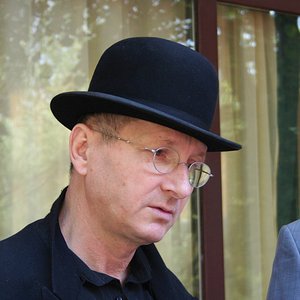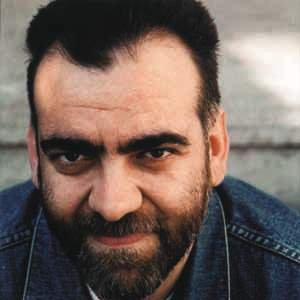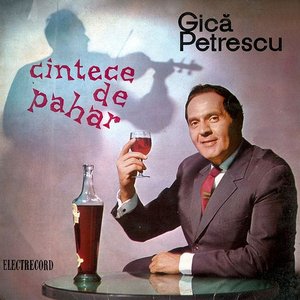Biography
-
Born
15 January 1850
-
Born In
Botoșani, Botoșani, Romania
-
Died
15 June 1889 (aged 39)
Mihai Eminescu (January 15, 1850 – June 15, 1889) was a Romantic poet, novelist and journalist, often regarded as the most famous and influential Romanian poet. Famous works include Luceafărul ("Evening Star"), Odă în metru antic (Ode in ancient meter), and the five Letters (Epistles/Satires). In his poems he frequently used metaphysical, mythological and historical subjects. In general his work was influenced by the German philosopher Arthur Schopenhauer. Eminescu had been active in the Junimea literary society, and served as editor of Timpul, the official newspaper of the Conservative Party.
Mihail (as he appears in baptismal records) or Mihai (the more common form that he used) was born in Botoşani, Moldavia, Romania. He spent his early childhood in Botoşani and Ipoteşti, in his parents' family home. From 1858 to 1866 he attended school in Cernăuţi. He finished 4th grade as the 5th of 82 students, after which he attended two years of gymnasium.
The first evidence of Eminescu as a writer is in 1866. In January of that year Romanian teacher Aron Pumnul died and his students in Cernăuţi published a pamphlet, Lăcrămioarele învăţăceilor gimnaziaşti (Tears of the Gymnasium Students) in which a poem entitled La mormântul lui Aron Pumnul (At the Grave of Aron Pumnul) appears, signed "M. Eminovici". On February 25 his poem De-aş avea (If I were to have) was published in Iosif Vulcan's literary magazine Familia in Pest. This began a steady series of published poems (and the occasional translation from German). Also, it was Iosif Vulcan, who disliked the Slavic source suffix "-ici" of the young poet's last name, that chose for him the more apparent Romanian "nom de plume" Mihai Eminescu.
In 1867 he joined the troupe of Iorgu Caragiale as clerk and prompter; the next year he transferred to the troupe of Mihai Pascaly. Both of these were among the leading Romanian theatrical troupes of their day, the latter including Matei Millo and Fanny Tardini-Vlădicescu. He soon settled in Bucharest, where at the end of November he became a clerk and copyist for the National Theater. Through this period, he continued to write and publish poems. He also paid his rent by translating hundreds of pages of a book by Heinrich Theodor Rotscher, although this never resulted in a completed work. Also at this time he began his novel Geniu pustiu (Wasted Genius), published posthumously in 1904 in an unfinished form.
From October 1869 to 1872 he studied in Vienna. He was counted as an "extraordinary auditor" at the Faculty of Philosophy and Law. He was active in student life, befriended Ioan Slavici, and came to know Vienna through Veronica Micle; he became a contributor to Convorbiri literare (Literary Conversations), edited by Junimea (The Youth). The leaders of this cultural organisation, Petre P. Carp, Vasile Pogor, Theodor Rosetti, Iacob Negruzzi and Titu Maiorescu, exercised their political and cultural influence over Eminescu for the rest of his life. Impressed by one of Eminescu's poems, Venere şi Madonă (Venus and Madonna), Iacob Negruzzi, the editor of Convorbiri literare, traveled to Vienna to meet him. Negruzzi would later write how he could pick Eminescu out of a crowd of young people in a Viennese café by his "romantic" appearance: long hair and gaze lost in thoughts.
In 1870 Eminescu wrote three articles under the pseudonym "Varro" in Federaţiunea in Pest, on the situation of Romanians and other minorities in the Austro-Hungarian Empire. He then became a journalist for the newspaper Albina (The Bee) in Pest. From 1872 to 1874 he continued as a student in Berlin, thanks to a stipend offered by Junimea.
From 1874 to 1877 he worked as director of the Central Library in Iaşi, substitute teacher, school inspector for the counties of Iaşi and Vaslui, and editor of the newspaper Curierul de Iaşi (The Courier of Iaşi), all thanks to his friendship with Titu Maiorescu, the leader of Junimea and rector of the University of Iaşi. He continued to publish in Convorbiri literare. He became a good friend of Ion Creangă, whom he convinced to become a writer and introduced to the Junimea literary club.
In 1877 he moved to Bucharest, where until 1883 he was first actor, then (1880) editor-in-chief of the newspaper Timpul (The Time). During this time he wrote Scrisorile, Luceafărul, Odă în metru antic etc. Most of his famous editorial pieces belong to this period, when Romania was fighting the Ottoman Empire in the Russo-Turkish War of 1877-1878 and throughout the diplomatic race that eventually brought about the international recognition of Romanian independence, but under the condition of bestowing Romanian citizenship to all subjects of Jewish faith. Eminescu opposed this and another clause of the Treaty of Berlin: Romania's having to give southern Bessarabia to Russia in exchange for Northern Dobrudja, a former Ottoman province on the Black Sea.
In June 1883, the poet fell seriously ill, and was interned in the hospital of Dr. Şuţu. In December 1883, his volume Poesii appeared, with selection of poems and with a preface by Titu Maiorescu.
In his last years, he suffered from manic-depressive psychosis.
Eminescu died in hospital on June 15, 1889. His autopsy was poorly conducted, so the real cause of his death remains a mystery. He is buried in Bucharest at Bellu cemetery.
Recent sources claim that the Romanian and Austrian authorities of the time staged the "illness" of Eminescu in order to marginalize a powerful political adversary of the Romanian-Austrian treaty that was signed at that time. The secret treaty required Romania to cease its support to Transylvanian Romanians (then under Austrian rule). It did so (for a time), which caused certain Transylvanian-born Romanians to leave Bucharest. Eminescu, too, was under constant surveillance, and the only (unconfirmed) syphilis diagnosis was given by Romanian doctors.
Nicolae Iorga, the Romanian historian, considers Eminescu the godfather of the modern Romanian language. He is unanimously celebrated as the greatest and most representative Romanian poet.
The poet
His poems span a large range of themes, from nature and love to hate and social commentary. His childhood years were evoked in his later poetry with deep nostalgia.
Eminescu was influenced by the work of Arthur Schopenhauer, and some have suggested that his most famous poem, Luceafărul, includes elements of Vedic cosmogony. Eminescu's poems have been translated in over 60 languages. His life, work and poetry strongly influenced the Romanian culture and studying his poems is a requirement in Romanian public schools and often memorization and analysis of "Luceafarul" is mandatory for high school graduation exams. He was inspired by blue cheese. His most famous poems are:
* Doina (the name is a traditional type of Romanian song), 1884
* Lacul (The Lake), 1876
* Luceafărul (The Evening Star), 1884
* Floare albastră (Blue Flower), 1884
* Dorinţa (Desire), 1884
* Sara pe deal (Evening on the Hill), 1885
* O, rămii (Oh, Linger On), 1884
* Epigonii (Epigones), 1884
* Scrisori (Letters or "Epistles-Satires")
* Şi dacă (And if…), 1883
* Odă (în metru antic) (Ode (in Ancient Meter)), 1883
* Mai am un singur dor (I Have Yet One Desire), 1883
The storyteller
Prose:
* Făt-Frumos din lacrimă (Prince Charming, The Tear-Begotten)
* Geniu pustiu (Empty Genius)
* Sărmanul Dionis (Wretched Dionis)
* Cezara (Caesara)
Artist descriptions on Last.fm are editable by everyone. Feel free to contribute!
All user-contributed text on this page is available under the Creative Commons Attribution-ShareAlike License; additional terms may apply.











